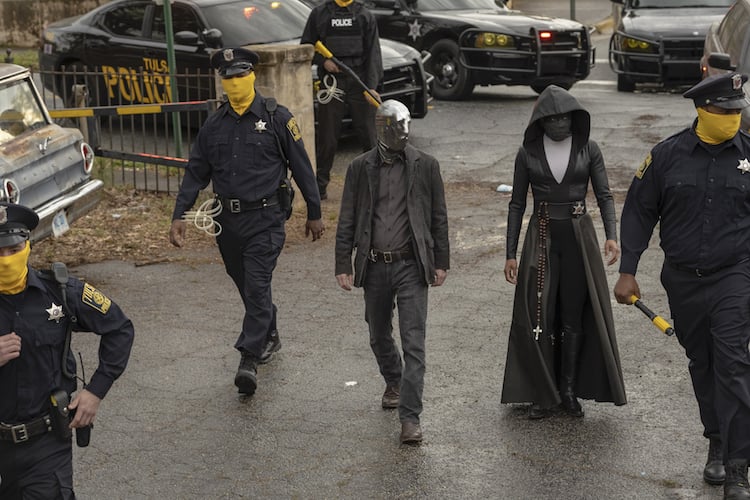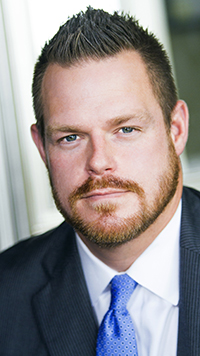'Watchmen' shows just how far policing police could go

Regina King and Tim Blake Nelson in HBO’s Watchmen. Photo from MovieStillsDB.com.
“Quis custodiet ipsos custodes?”
Although the Latin used by Juvenal in his ancient Roman Satires literally translates to “Who will guard the guards themselves?” comic book author Alan Moore transported the phrase to the dystopian future of his landmark twelve-issue comic book limited series Watchmen, which ran from 1986-1987. In the comic book series and the 2009 film-adaption of the same name, the phrase “Who watches the watchmen?” reappears throughout the works in various forms and mediums.
I never read the entire comic book series but I did read a few issues, and I loved the movie. As my readers are well aware, I’m a sucker for superhero/comic book media, and Moore’s source material (along with Zack Snyder’s direction) rarely fails to deliver. What made Watchmen so relatable was the fact that the “superheroes” weren’t really “super” at all; they were simply somewhat gifted, well-trained regular Joes and Janes doing their part to fight the injustice they saw around them.
The crimefighters initially appeared in public around the 1940s through the 1960s. Some called them vigilantes. Others simply called them brave. Regardless, their original fight against the forces of corruption and crime (we’ll leave out their government-sponsored involvement in the Vietnam War and the Watergate scandal later in life) aided law enforcement in handling the situations that required a mask as opposed to a badge.
HBO’s ‘Watchmen’
With my affinity for the film firmly entrenched, I was extremely excited to learn about HBO’s new series Watchmen—and it has so far delivered on its extraordinary promise. The series is exceptionally well-written, excellently acted, and very engaging.
Although Zack Snyder is not involved with the direction or production of the HBO series, Nicole Kassell directs and Damon Lindelof writes with an eye toward creating something fresh and exciting as opposed to merely piggybacking on Snyder’s success. In fact, HBO’s Watchmen has nothing to do with the original comic book series or the film-adaption per se. The HBO series is set in a future that is not a direct adaptation of the source material nor a sequel to the film-adaptation.
Watchmen the series is, for the most part, a creature all its own. There are a few characters who return from the comics and the film, and they help to add some continuity to the new story. Returning fans will find their presence a welcome development, and their insertion into the plot is accomplished in an unobtrusive way that allows for the series to be enjoyed on its own.
The first episode begins with what appears to be a routine traffic stop. However, as the law enforcement officer’s encounter with the civilian continues, it’s clear that this “future” places quite a few restrictions on cops. Police officers are forced to wear bandanas to hide their identity, and they have remote-controlled locks on their service firearms; they have to radio headquarters to get the sidearm unlocked. As imagined, the delay in unholstering equals a loss of valuable time in a split-second situation. As the series plays out, viewers come to learn about the events that led to the current state of law enforcement and the oversight they must deal with.
Law enforcement oversight is necessary
There is no question we as a society have to police our police. Even the framers noted a need to bear arms against those who would oppress our rights. Now, to be fair, those folks were more than likely worried about a tyrannical dictator taking over as opposed to a militarized police force. Still, we Americans come by the fear honestly.
There’s no need to recount the various officer-involved shootings over the last few years. We’ve seen cops shoot unarmed adults, and we’ve seen unarmed teenagers shot and killed as well. In other cases, officers have shot and killed unarmed people in the midst of mental health episodes that were misunderstood and misdiagnosed by those responding.
I’ve written before about the need for mental health/crisis intervention training for responding officers. Proper training in regard to mental health issues, their warning signs and potential manifestations may be the difference between opening fire and taking a different, nonlethal approach. At the same time, though, addressing the apparent trigger-happy nature of some officers—like those who ultimately find themselves charged with manslaughter or murder due to their actions in the line of duty—is imperative as well.
Some law enforcement take active-shooter training programs that help hone their ability to diagnose who to fire on, and more importantly, who not to fire on. Honestly, it’s not easy. I’ve experienced how difficult that assessment can be when nothing is on the line. I can’t imagine the difficulty in a life-or-death situation.
Still, I don’t carry a firearm for a living. I didn’t sign up for situations in which I might have to use deadly force. Consequently, deciding who to shoot and who not to shoot at a second’s notice isn’t my cup of tea. I’d like to think that with enough training and practice, I could get my recognition speed to a point where my decision-making and reactions are at the peak of my abilities. If I cared enough about the task to make law enforcement my life’s work, I’d care enough to train myself to be the best I could possibly be.
I hope the majority of law enforcement officers feel the same way. Because, as Watchmen makes clear, putting physical restrictions and controls on law enforcement’s firearms—or requiring them to get remote approval to draw and fire—is not the answer.
How much is too much?
Which, of course, brings us back to Juvenal’s original question: “Who will guard the guards themselves?”
To be fair, as a defense attorney, I’m not usually the one advocating for the cops. Now, I’ve never wished ill will on law enforcement. But we are on different sides of the playing field. Even so, I know plenty of law enforcement officers, and I want them to be safe in the line of duty.
In that sense, I firmly believe we have to find a way to control our officers’ use of their service weapons without inhibiting their ability to actually use them when necessary. (If we are going to continue with armed law enforcement, we need to at least give them the tools and authority to accomplish their underlying goal—which is to protect and serve, in a perfect world at least).
The only thing we have to guard the guards is the guards (and their weapons) themselves.
Many will argue that if officers were forced to get authorization to draw their weapons prior to their sidearms being “unlocked,” then officers would have to think longer about whether the assumed threat is, in fact, a threat at all. However, the threat also has time to escalate while the officer is awaiting approval. It’s hard not to believe those facts play out poorly for the officer the majority of the time.
Consequently, there has to be some middle ground. I don’t know where it is, though, and different agencies will always have different standards and opinions. I think the solution starts with a focused emphasis on officer reaction-time training.
Perhaps a standardized protocol and training program for law enforcement agencies nationwide would be a good start. Sadly, I don’t think enough work has been done in that field. I found a few studies online regarding reaction time as it relates to officer-involved shootings, but nothing appeared government-sponsored. Large-scale implementation would likely require big bucks from a private donor or monumental political momentum. I doubt we’re there yet.

Adam Banner
Adam R. Banner is the founder and lead attorney at the Law Offices of Adam R. Banner, a criminal defense law firm in Oklahoma City. His practice focuses solely on state and federal criminal defense. He represents the accused against allegations of sex crimes, violent crimes, drug crimes and white-collar crimes.
The study of law isn’t for everyone, yet its practice and procedure seem to permeate pop culture at an increasing rate. This column is about the intersection of law and pop culture in an attempt to separate the real from the ridiculous.



